I am using this code:
library(tidyverse)
set.seed(143)
series <- data.frame(
time = c(rep(2017, 4),rep(2018, 4), rep(2019, 4), rep(2020, 4)),
type = rep(c('a', 'b', 'c', 'd'), 4),
value = rpois(16, 10)
)
plot1 <- ggplot(series, aes(time, value)) +
geom_area(aes(fill = type))
plot2 <- ggplot(series, aes(time, value)) +
geom_area(aes(fill = type)) +
scale_x_continuous(limits=c(2018, 2020), breaks=seq(2014, 2021, by=1))
For plot2, how can I expand the 'fill' between x=2018 and the y-axis? I would not like to see 2017 itself (as in plot1), but I would like to see this 'fill' between the y-axis (say x=2017.8) and x=2018.
I tried limits=c(2017.8, 2020), but no luck.
Edit

